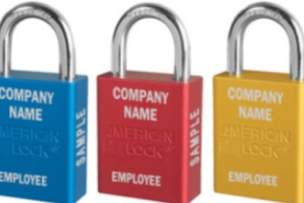No one would suggest that lockout/tagout policies and controls are unnecessary when it comes to protecting workers from potentially fatal energy sources. But OSHA recognizes that new technologies and alternative control techniques could require updates to the 30-year-old standard.
The current lockout/tagout standard took effect in 1989, long before much of anything highly robotic was common on shop floors and certainly before the use of sensor-heavy control circuit type devices were being considered for controlling the release of errant electricity.
The evolution and use of control devices other than energy-isolating devices (EIDs) and robotics in manufacturing have prompted the Occupational Safety and Health Administration to revisit the Control of Hazardous Energy Standard, CFR 1910.147.
The agency has issued a request for information, but the comment window will close on Aug. 19, 2019, at which time OSHA plans to decide whether to kick off rulemaking to draft changes to the standard that requires all sources of energy be controlled during servicing and maintenance of machines and equipment using EIDs. The regulation specifically precludes use of control circuit devices.
First Lockout/Tagout Safety Standard OSHA Update in 30 Years?
There seems little doubt among some lawyers that the standard will be updated for the first time since its inception. Lawrence Halprin of the law firm of Keller and Heckman writes in an article for The National Law Review that his firm expects OSHA to amend the current standard.
He encourages businesses to comment so that they have a say in the rulemaking process, particularly with regard to the use of control circuit type devices.
“For those employers who would like to take advantage of this technology for the first time, and for those employers who would like to expand their use of this technology to control hazardous energy while performing maintenance and servicing activities,” Halprin points out, “this initiative provides a golden opportunity to educate OSHA on the appropriate uses of this technology.”
About a month before the comment deadline, the agency had received less than two dozen comments.
For its part, OSHA acknowledges that “technological advances since the standard was issued in 1989 suggest that, at least in some circumstances, control circuit type devices may be at least as safe as EIDs.” Plus, the agency wants to understand the hazards and benefits that the increasing use of robots and robotic components presents with respect to control of hazardous energy.
OSHA says its goal is to decide “whether the agency should consider changes to the LOTO standard that would address these new risks.”
The request says, “OSHA will use the information received in response to this RFI to determine what action, if any, it may take to reduce regulatory burdens while maintaining worker safety.”
But Halprin and other lawyers with Keller and Heckman suggest that the potential burden and cost of possible changes could fall more on businesses, particularly as updates to the standard affect the use of devices other than EIDs.
He and three other lawyers at the firm told EHS Today that they expect OSHA will propose eliminating all uses of the word “unexpected” from the current standard, which would make all energy control measures subject to the lockout/tagout regulation.
“This would dramatically shift the burden of proof from OSHA’s current burden of showing a potential for unexpected energization, startup or release of energy to the employer having the burden of showing its reliable control circuit meets some specified level of safety performance,” they say.
Hydraulic or pneumatic? Thermal or electrical? Not sure which LOTO PPE and kits are right for you? Find just the right ones in our self-service, interactive product selector.
OSHA Open to Use of Alternative Safety Technology for Lockout/Tagout Procedures
Although OSHA requires the use of EIDs, over the years the agency has provided variances and exceptions. In fact, OSHA cites a permanent variance it made in 2016 to a company using a control circuit type device for lockout/tagout, in part, for prompting the agency to look into updating its standard.
OSHA makes it clear in its background information to the RFI that its focus when deciding whether to allow the use of control circuit type devices turns on three specific items:
- Does the use of alternate devices allow “energy control measures to remain under the personal control of the exposed employee?”
- Can employees verify de-energization?
- And, is it possible to easily identify “authorized employees” before equipment is restarted?
To reach its 2016 decision to grant the variance request, OSHA reviewed a closed system proposed by Nucor Steel Connecticut Inc. and found it met all three criteria.
Find LOTO confusing? Here’s some help. Read “Lockout/Tagout Procedure Tips: Authorized vs. Affected Employees.”
NIOSH Provides Its Research on Control Circuit Type Devices
Of the early comments, one comes from the National Institute for Occupational Safety and Health’s Paul A. Schulte, director, Division of Science Integration.
His comment details NIOSH research of control circuit type devices and also shares details from agency investigations into four fatalities involving the release of hazardous energy while working with robotic technologies.
New sensor technologies in the field of control circuits, the comment explains, suggest that the latest control circuit type devices have the potential to add additional protections for lockout/tagout procedures.
As to the fatalities, NIOSH investigated four that occurred between 1980 and 2018. In each of these cases, the findings identified multiple missteps, including a lack of or improper use of lockout/tagout programs.





Talk to Us!
Please see my comments regarding OSHA's RFI.
Would appreciate support from your readers for changes proposed.
https://www.regulations.gov/docket?D=OSHA-2016-0013
OSHA-2016-0013-0045
OSHA-2016-0013-0047
Thanks,
Rich
239-898-6331
15Leave a reply
Your email address will not be published. Required fields are marked *